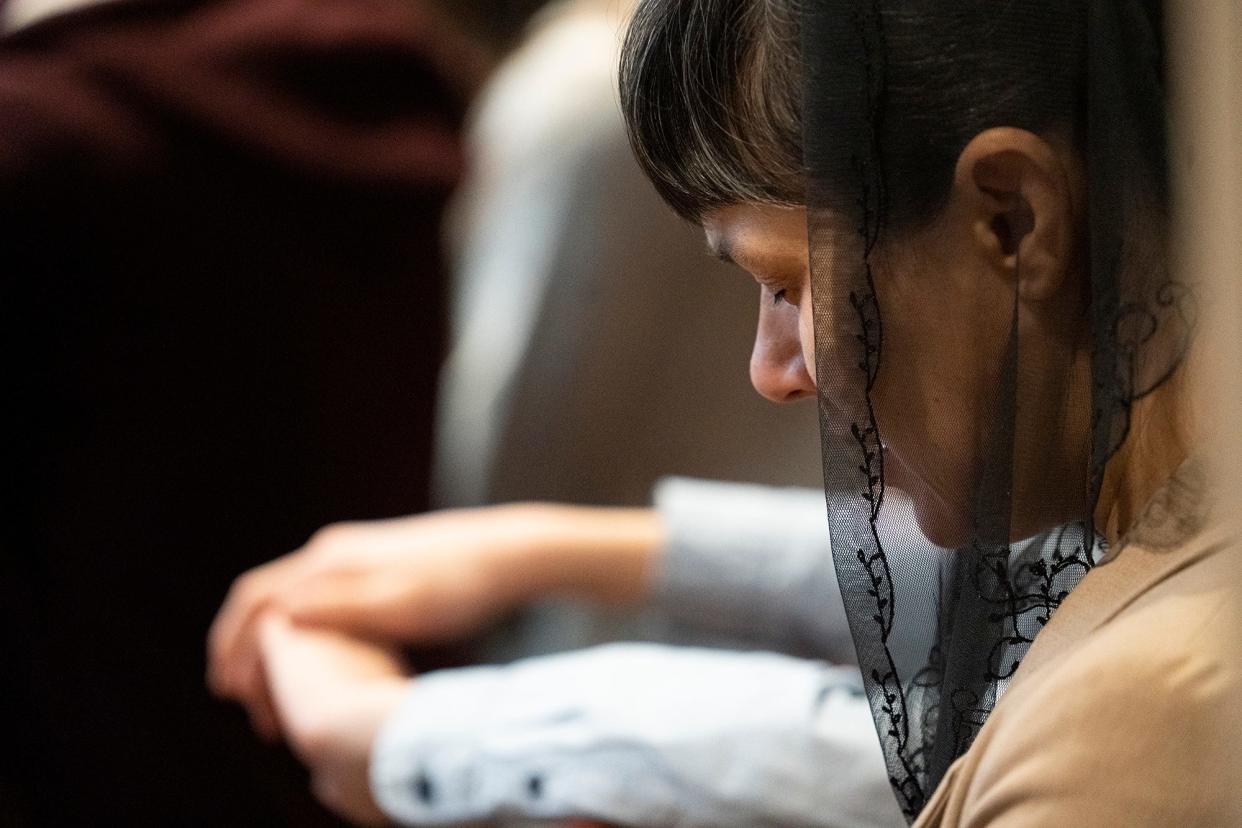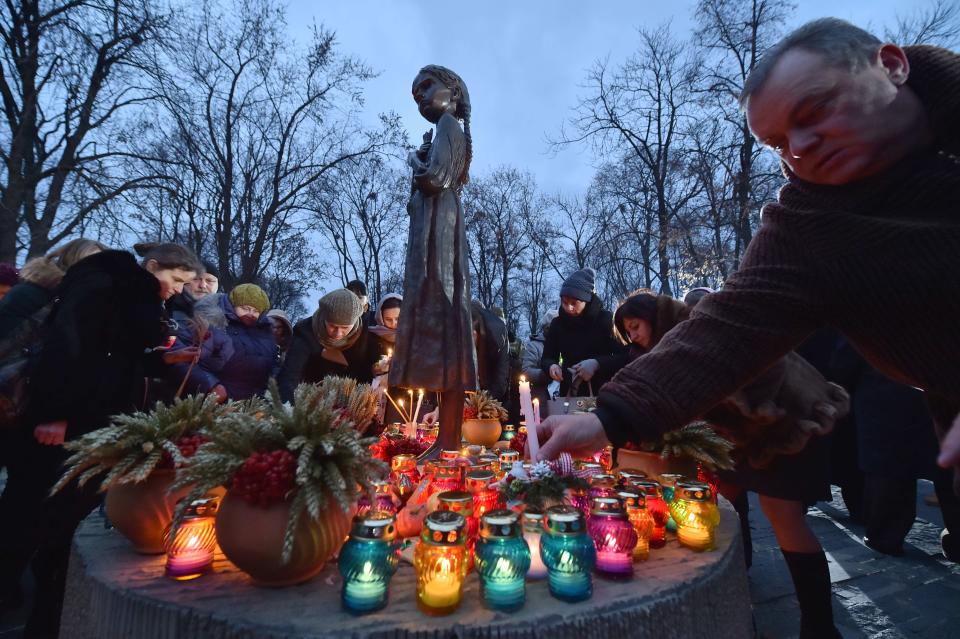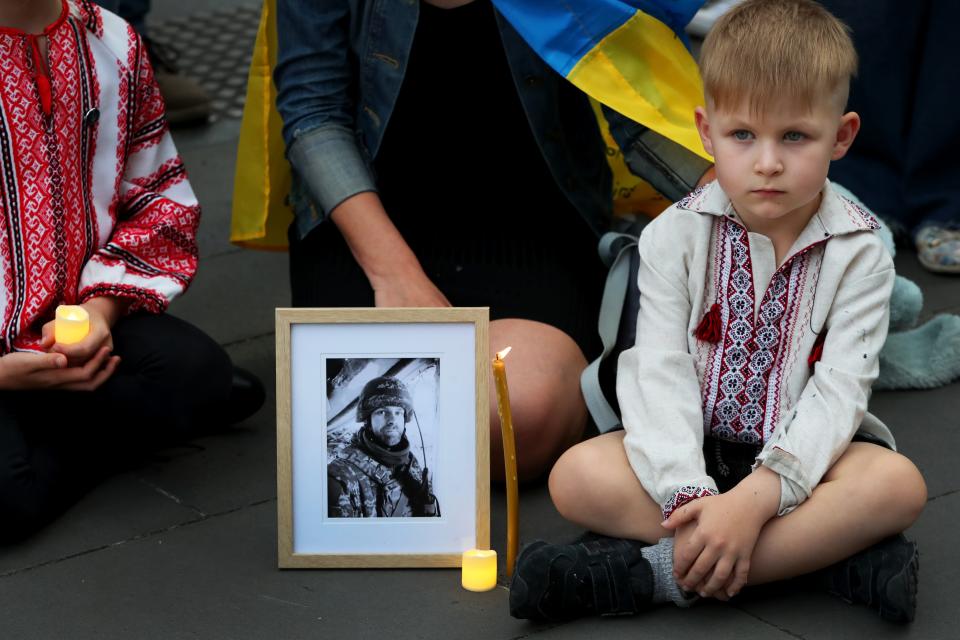A year after Russian invasion Ukraine still want what Americans have

- Oops!Something went wrong.Please try again later.
- Oops!Something went wrong.Please try again later.
Christian Raffensperger is the Kenneth E. Wray chair in the humanities at Wittenberg University.
One year ago today, Vladimir Putin’s Russian army invaded Ukraine.
Kyiv is 5,000 miles from Columbus. The actual front in their war with Russia is another 450 miles beyond that (Ukraine is about as big as Texas).
So, why should someone in southern Ohio care about a war happening a world away?
Though about a fifth of Ohioans come from eastern Europe, that isn’t an answer by itself. Instead, I would suggest that the Ukrainian story is similar in many ways to the American story.
Graphic essay:Why Russia invaded Ukraine and a 'long and frozen conflict' might be next
The history of Russian aggression against Ukraine goes back before the invasion of 2022, even before the invasion of 2014 in which Putin annexed Crimea.
Russification of Ukrainians
As far back as the time of the Russian Empire, under Tsars Alexander III and Nicholas II, Ukrainians were not officially recognized as a people by the Russian government. The “little Russians,” as the tsars liked to call them, were considered to be simply Russians of a different sort.
This perception led to multiple attempts at wiping out Ukrainian identity.
Even amidst the horrors of World War I, Russian generals executed policies of Russification in Ukrainian areas, closing Ukrainian churches and changing street signs from Ukrainian to Russian, demonstrating how important quashing Ukrainian identity was for the Russian government.
The starving time

The Soviet Union maintained, after a brief interlude, the same policies toward the Ukrainians as the Russian Empire.
The most dramatic example comes in the early 1930s during what the Ukrainians call the Holodomor – the starving time.
The Holodomor was a man-made famine created by Joseph Stalin as a way to root out Ukrainian nationalism. This largely unrecognized genocide led to the deaths of 3.9 million Ukrainians from 1932-34.

When Ukraine was finally able to declare its independence in 1991, it was a watershed moment: the first time that the Ukrainian people had a nation of their own. Despite the joy, this was a difficult time. The Ukrainians, like the Russians, had no real history of free elections, no open media, and no good checks and balances in their government.
This led to a host of problems, including, most notably, corruption. But the Ukrainian people have continued to improve their nation. They have held numerous free and fair elections and power has changed hands peacefully. Democracy is a process that needs continual work.
Troy Balderson: Tone deaf green-at-all-cost argument empowered Putin. It is bad for Ohio
What do Ukrainians want?

Thus, perhaps the thing that we most have in common is not just freedom or democracy, but the striving for freedom and democracy.
Ukrainians want what Americans have, the freedom to manage one’s own affairs and not worry about foreign intervention.
We had to fight to get that, from the American Revolution to the War of 1812, when we fought against a country that claimed we were nothing more than part of them. By the twentieth century we became the guarantor of freedom in western Europe and elsewhere.
So, one year into the war in Ukraine, why should we as Ohioans and Americans support Ukraine?
It is not because this is a continuation of the Cold War, because it’s not. Nor is it being anti-Russian (keep in mind, the Russian people do not have freedom of speech).
I would say that it’s because this is what we do and who we are. Americans support those striving for freedom and democracy. Americans oppose foreign aggression. Independence is a value that Americans, Ohioans in particular, believe is worth defending – both here and abroad.
Christian Raffensperger is the Kenneth E. Wray chair in the humanities at Wittenberg University.
This article originally appeared on The Columbus Dispatch: Russian invasion anniversary: Why Ohioans should care about Ukraine.

